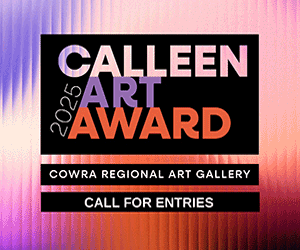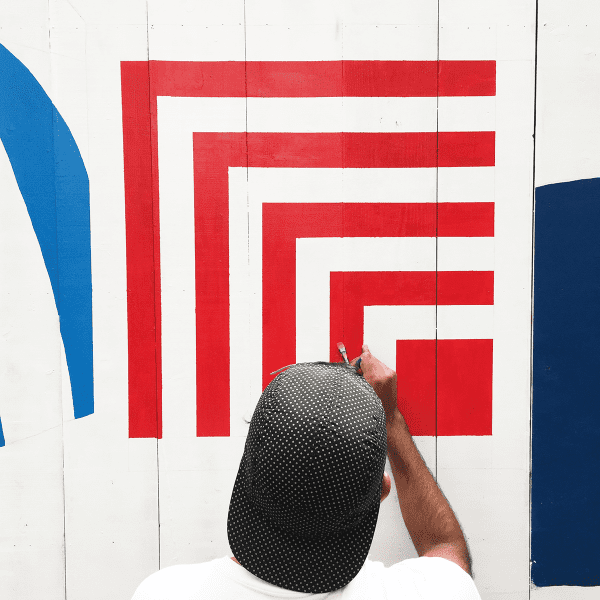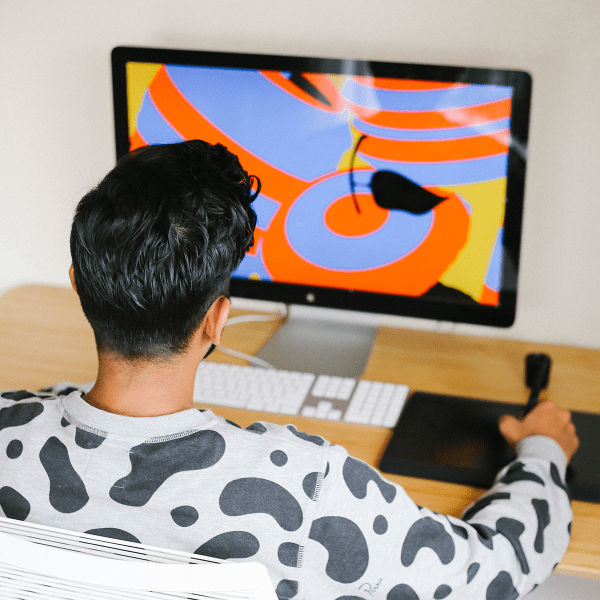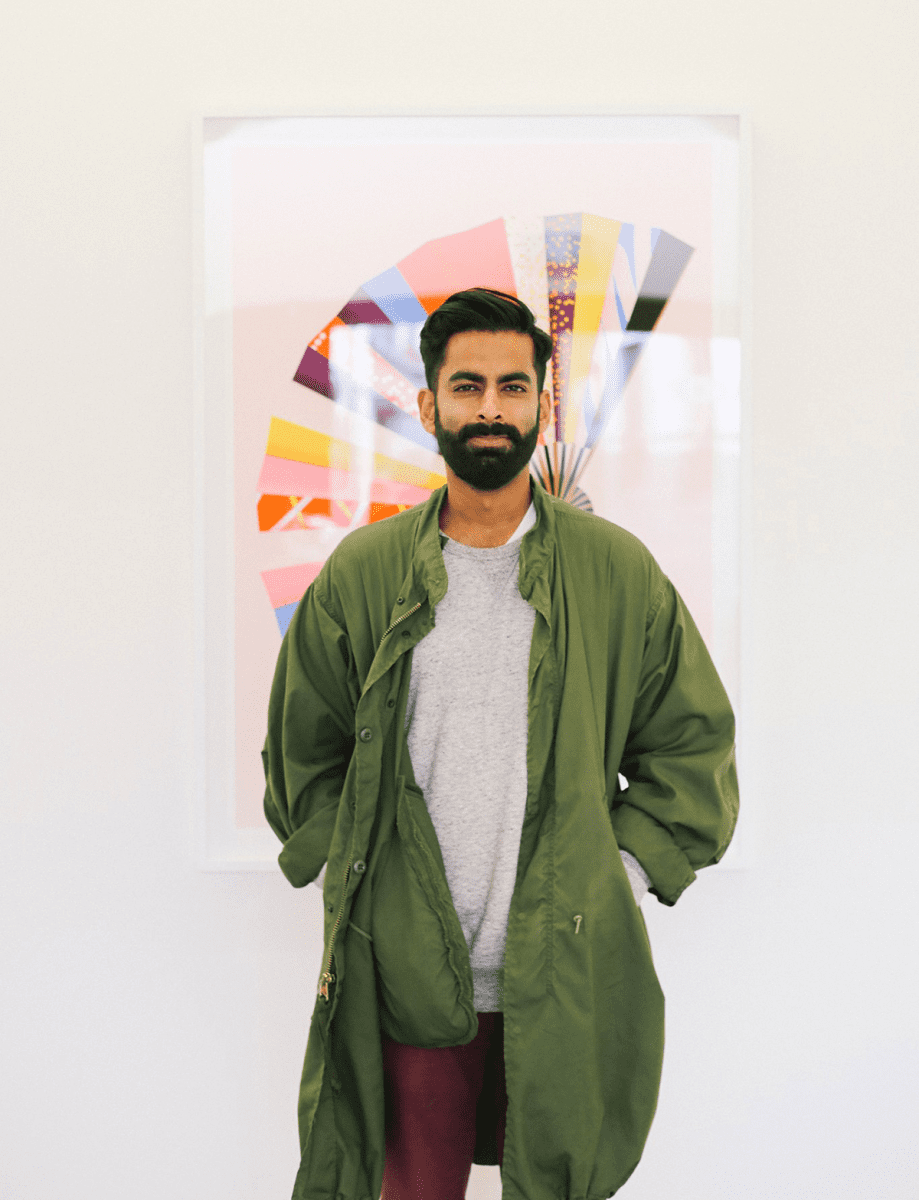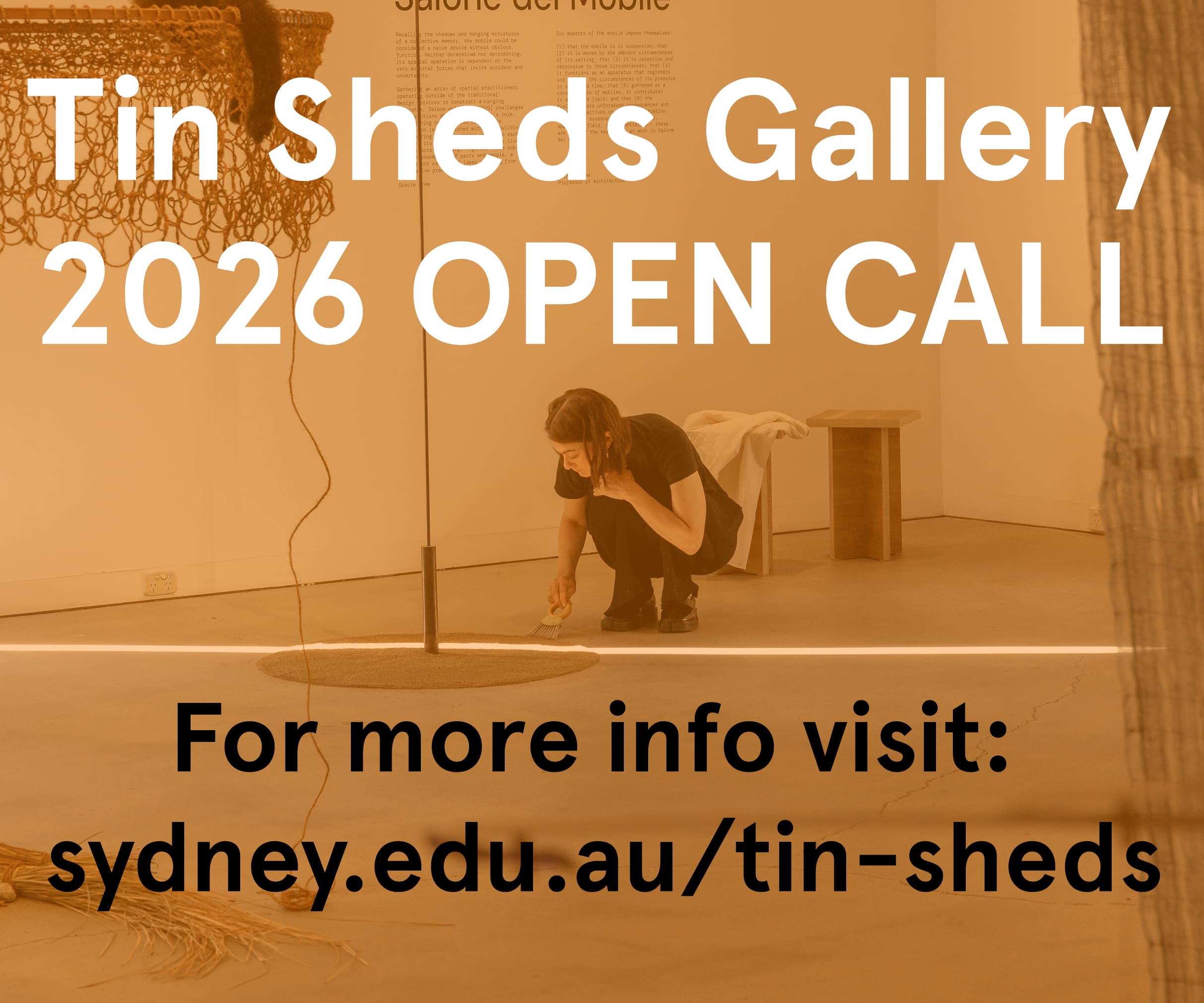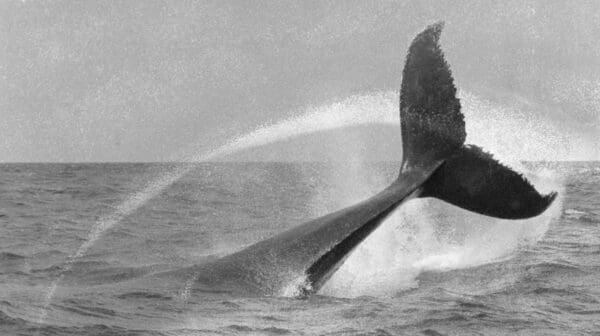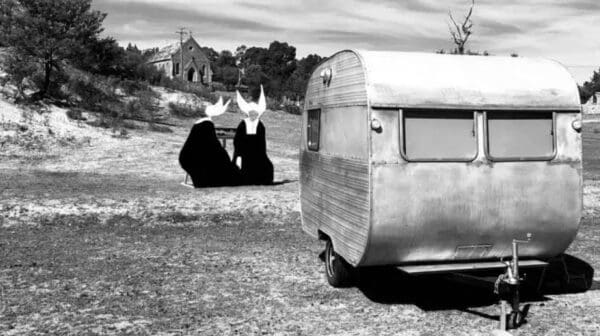Sugar Mountain is an annual single-day music festival which also encompasses visual art and new media. The festival is held in the grounds at the Victorian College of the Arts in Southbank.
Karan Singh’s graphic works are disorienting and calming at once. His practice, while beginning with illustration, has evolved into creating moving graphics and more recently, 3D immersive, responsive spatial work. This year the fifth Sugar Mountain Festival invited Singh to respond to the bands and to the space of the Victorian College of the Arts. The choice of venue is not coincidental, the festival prides itself on bringing art into the music space. Singh’s hallucinogenic, augmented reality pieces will inhabit the main stage and various locations around the campus. Sarah Werkmeister talked to Singh, who lives in Tokyo, while he was in Sydney developing his work for Sugar Mountain.
Sarah Werkmeister: Firstly, how would you describe your practice?
Karan Singh: I work somewhere between illustration, art and animation. I’m interested in communicating depth and dimension through restricted colour plates and surreal animation. When I was younger, I had always loved drawing but wasn’t the most confident with it. I felt that computers gave me a second chance at being creative. Illustration has always been a passion but I wasn’t sure if I could make a career out of it until I received my first commission while at university. Now I’m looking into exhibiting more and creating installations and animations. I’d describe it as a restless evolution of visual communication.
I think that measuring by ‘how something makes you feel’ as opposed to ‘what it is’, regardless of whether it’s art or not, is much more valuable.
SW: How do you see the role of design within the broader arts landscape? Some say that it often takes a more functional or utilitarian space within the sector, but how do you feel about that?
KS: There’s always this question about whether design can serve as art. I think the difference is that design serves a purpose where there’s a brief to solve. With art you can be a lot more singular about what you’re trying to convey. Nevertheless, while they serve different purposes, design can still be evocative and pose questions in the same way a painting or sculpture or dance does. I think that we have a tendency to define or categorise people or things when there’s a lot more creative freedom if we don’t. I think that measuring by ‘how something makes you feel’ as opposed to ‘what it is’, regardless of whether it’s art or not, is much more valuable.
SW: You are from Australia, have lived in New York, and now base yourself in Tokyo. Can you tell me why you chose Tokyo in particular as a place to spend time and how you think that has influenced your practice? I can see echoes of Japanese op art and Superflat in your work.
KS: I left Melbourne in about 2011 for a job in New York, luckily at the same time as my girlfriend. We met as exchange students in Sweden a few years prior and share a wanderlust, so after four incredible years in New York we decided to throw ourselves in the deep end. We chose Tokyo because of our love for the food and culture, but we also wanted to challenge ourselves in a new city where we didn’t know anyone or speak the language. While there are visual similarities between my work and Superflat, it’s not intentional. That said, there are a lot of sensibilities from Japan that I’ve incorporated into my work, from minimal colour palettes to simple compositions. Sometimes I find that I’m trying to convey the chaos of Tokyo against Japanese minimalist sensibilities.
SW: How important was learning code and programming for your practice?
KS: I’m a terrible coder. I went to uni in Sydney and studied a course in design computing which nowadays is called interaction design. This was in a time before iPhones and I had chosen something that sounded design-ey. Nevertheless it was code heavy and I only really grasped the value of it after the release of the iPhone. In a way my terrible coding allowed me to focus on the visual side of things much more.
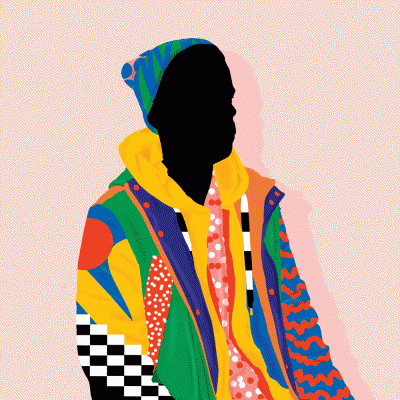
Image courtesy Karan Singh and Sugar Mountain Festival.
SW: Tell me about the work that you’re developing for Sugar Mountain. How do you see your work fitting in with the festival?
KS: I’ve had the opportunity to work with music in a variety of ways and I’ve always found it a great source of inspiration.
I did a project with IBM-US Open and James Murphy of LCD Sound system which was unique in that Murphy made tracks based on data collected from the matches. My role was purely visual in that I was one of the artists who made the artworks to accompany the tracks. More recently, I worked with OK Go and created stage projections as part of their US tour. It’s something I had never done before and it offered a rich springboard to respond to.
Sugar Mountain is also unique in that the visuals I’m creating for their stage will live both in a static and animated world. The static sculptural illustrations will take over the space and when interacted with through your device, will come alive in augmented reality. Again, it’s something new to me but I think it truly pushes the boundaries of what we can achieve when combining art and music in the real world by provoking people to interact with their surroundings.
Sugar Mountain Festival
Victorian College of the Arts, Melbourne
21 January


